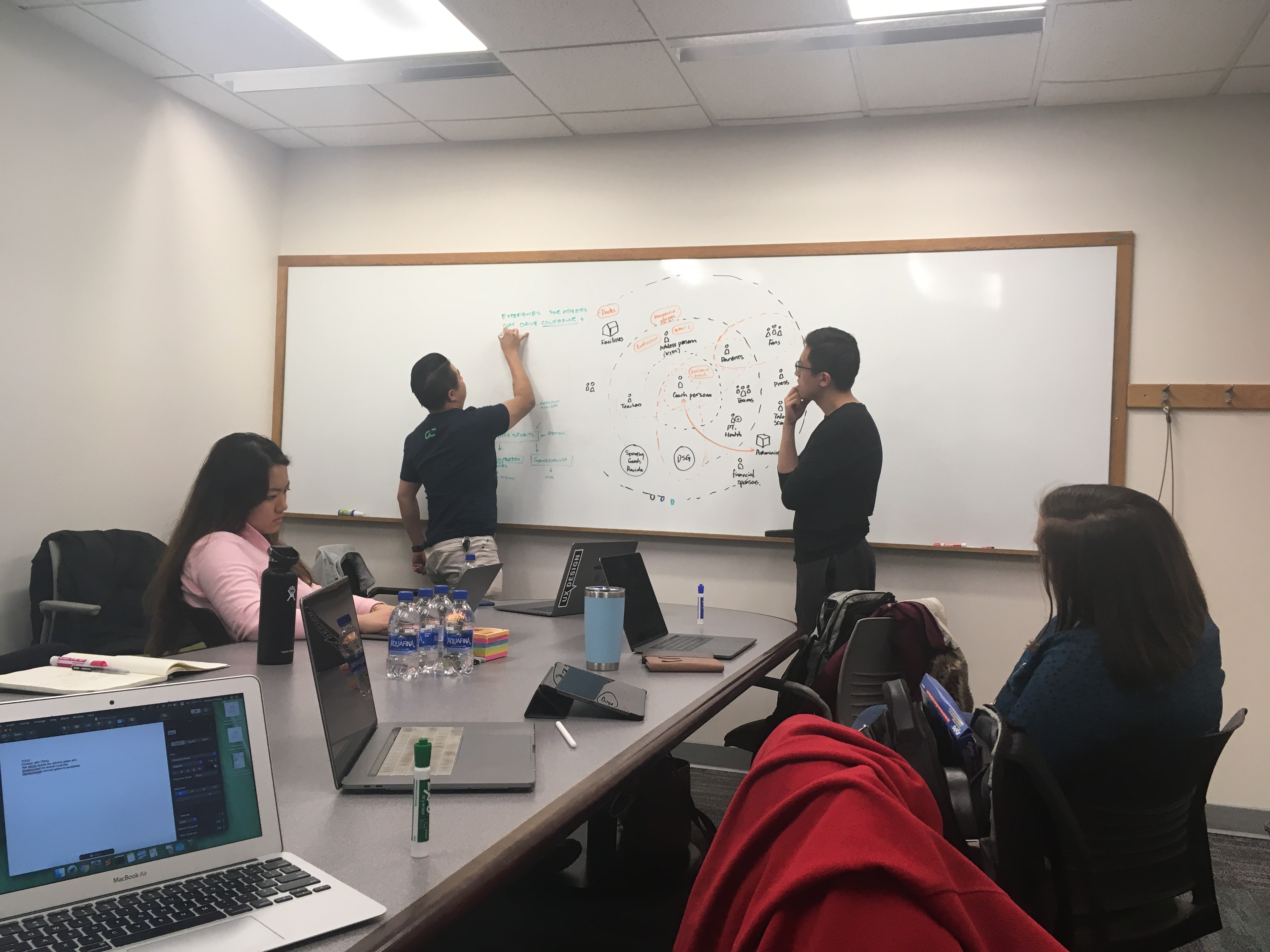DICK’s Sporting Goods University
DICK’s Sporting Goods University
May 2019
Task
How can DICK’s Sporting Goods (DSG) help youth coaches with their careers?
What I did
- Actively involved in every iteration throughout the whole process
- Conducted user interviews with youth coaches, youth atheltes, parents
- Used synthesis methods such as affinity diagram, feature matrix
- Designed the mobile prototype
- Communicated with DSG as the client liason
Challenges
- The project scope was huge and very ill-defined
- Coaches typically don’t use retail stores
- Interview other stakeholders centered around the coaches
What I learned
- Communicate effectively with the client
- As external consultants, we are the ones who help shape the clients’ need
- Justify your design result with business values / persona painpoints
Summary
Throughout the semester, our team worked to design a digital service for DICK's Sporting Goods that would push the company forward in its new vision to expand from retail and become ‘the sports company’.
As an innovative approach to expand DICK's’ influence across the athlete’s user journey, the team focused on the coach persona’s ability to influence the athlete’s experience at a higher level. Specifically, we would like to look for potential opportunities to "lengthen the athletic lifespan of youth athletes by empowering coaches’ abilities to address pain points that drive athletes out of the mastery loop."
From research, we focused on designing for pain points that youth athletes and coaches experience. All our ideas presented are based on these insights from direct primary and secondary research.
After evaluating over 40 ideas and even fully prototyping 5 ideas, we concluded that Dick's Sporting Goods University (DSGU) is a concept that is desirable, feasible and viable for all key stakeholders, including DICK's.
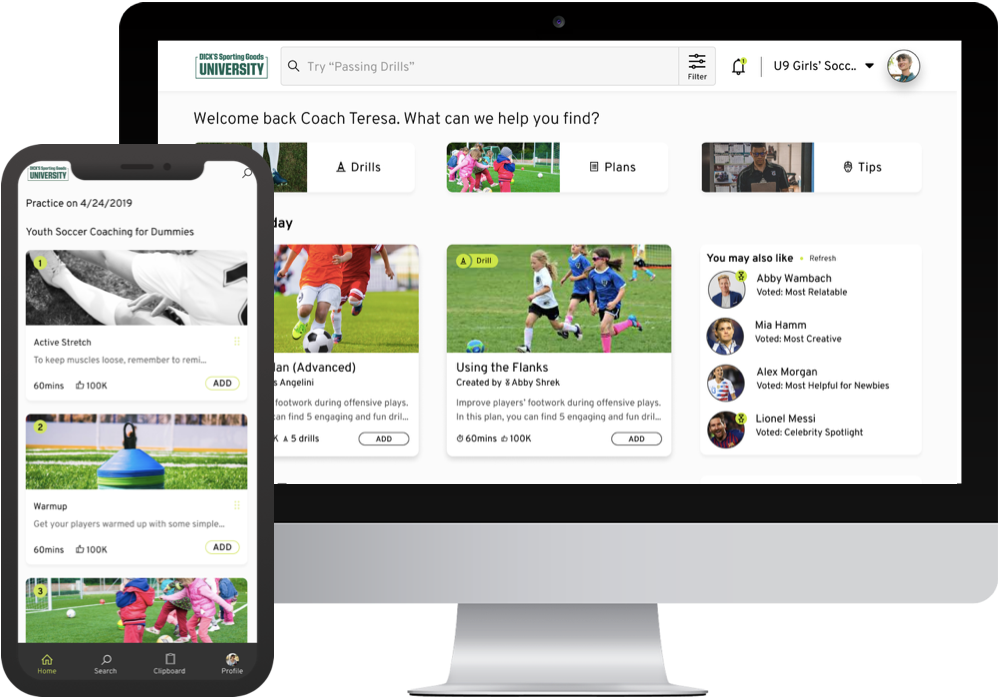
Using DICK's Sporting Goods University, coaches can browse for drills on their desktop, and use their phone as their clipboard on the field.
Initial Scope
In January 2019 when our client from DICK's Sporting Goods (DSG) first walked in, none of us had any idea where this project would be going. All we were given was "being a coach is hard", and that we were going to launch a project named "ultimate retail experience of the coaches".
Each year, the HCII have their graduating bachelor students do a capstone project with real client. Based on a personal preference survey, I and four other HCI undergrad students were assigned to DSG.
Initial Research: Who Are The Coaches?
During our first phase of research, we focused on trying to understand the problem space better. With this goal in mind, we focused on three aspects to ensure that our initial understandings of the market and coaching experiences would support our efforts going forward.
We interviewed 6 coaches, 10 athletes, 3 parents, 2 league directors, and even 8 DSG store employees! In this phase, we just wanted to dive into the industry as quick as possible.
Here's what we learned from this phase: (selected insights)
- Many coaches work to know the ins and outs of the players to build an off-the-field relationship with them and learn how to coach them more effectively.
- In coaches’ minds, retail stores are not good for customization, competitive pricing, or batch orders.
- Athletes purchase from their social connections which involve other athletes and sales reps from manufacturers. Both can provide great products at a competitively low price.
- Athletes repeatedly purchase products that fit them well from prior experience. They shop at retail stores for fitting.
- Parents often seek sports-related advice or information from people around them. Parents often rely on word of mouth from coaches, friends, and fellow parents.
- Being a part of the community and building connections plays a big part in shaping the sports experience for both the parents and the athletes. Sometimes, the community connections are the primary motivation for parents wanting their children to take part in sports.
However...
From our interviews, we learned that not only do coaches not use retail services, but they also represent a diverse group. There are coaches for youth athletes, college athletes, clubs, professionals; coaches for football, soccer; co-ed, male, female; recreational, competitive; paid, unpaid... We need to narrow down to one single group for the scope of this project.
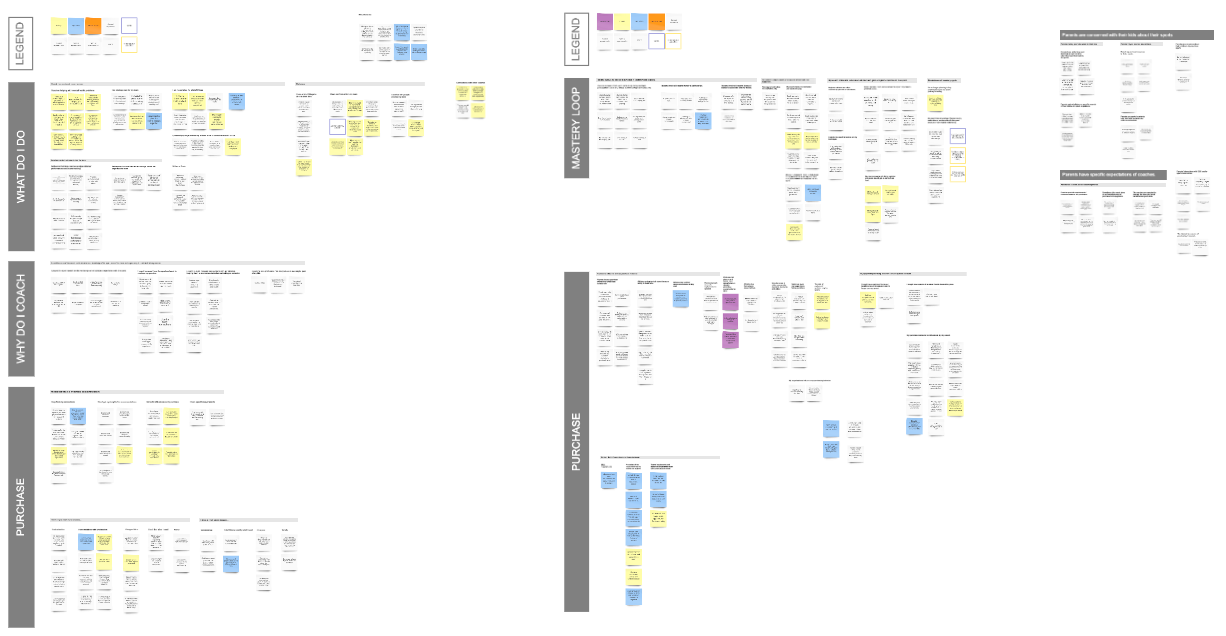
Affinity diagram. We interviewed coaches from many different groups, and generated 25 insights from our interviews. This is a HUGE design space! We need to narrow it down.
Market Research: Who Should We Focus On?
A key priority in our second research phase was to arrive at a more clearly defined scope that would deliver the maximum business value to DSG. In exploring this question, we quickly found that we lacked the business context in not only DSG’s position in the market, but also the trends in the overall sports retail market / industry.
To guide our research moving forward, we focused the research on the central question: Which category of the coach persona should DSG’s upcoming initiatives target to maximize the value-add to the company?
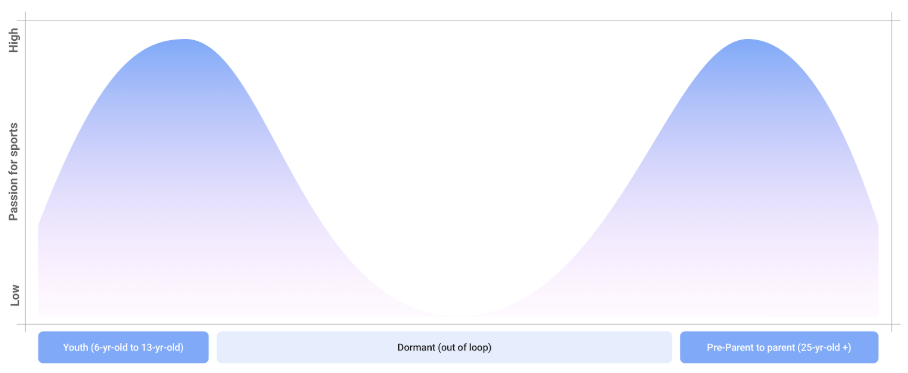
"Double peak hypothesis" we learned while visiting DSG’s headquarter. Youth athletes stay engaged in their sports, and then they quit for various reasons (left peak). When they are about to become parents, they pick up sports again (right peak). Images are not to scale.
Youth sports. That is our answer. Throughout our research, we learned that youth sports have a promising market; DSG also have existing resources on youth sports. If we define our project goal to be "keep youth athletes engaged", that fits with DSG’s business vision to become not only the best sports retail company, but also the best sports company.
Our project goal thus became defined as:
To lengthen the athletic lifespan of youth athletes by empowering coaches’ abilities to address pain points that drive athletes out of the mastery loop.
User Research: Who Are The Youth Coaches?
We conducted in-person and remote interviews with youth athletes, youth coaches, and parents. We selected 4 painpoints to focus on:
- Parents’ toxic behaviors and expectations discourage youth athletes from continuing the sport.
- New coaches lack experience in organizing effective practices that engage youth athletes.
- Coaches are unable to provide undivided time and attention to their athletes.
- Athletes’ uncertainty of their coach’s ‘big picture’ during practices drains athletes’ commitment to their sports.
Ideation / Prototyping: How Can We Help Youth Coaches?
After research, our team spent some time identifying the most important and feasible pain points to move on with our solution. These pain points include: coach’s lack of experience, coach’s limited time and attention, toxic parent behaviors, and athlete’s uncertainty about practice sessions. We brainstormed more than 40 solutions to target these pain points. Afterwards, we conducted a voting activity to narrow down the 40+ ideas to 8 ideas to storyboard.
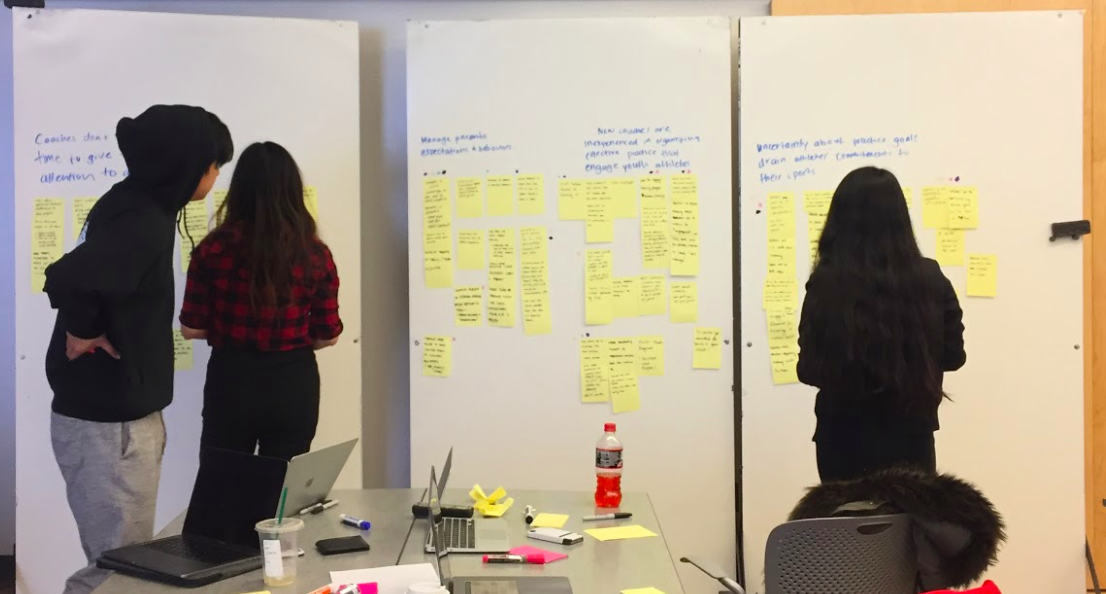
Brainstorming ideas that attacked on each painpoints we identified.
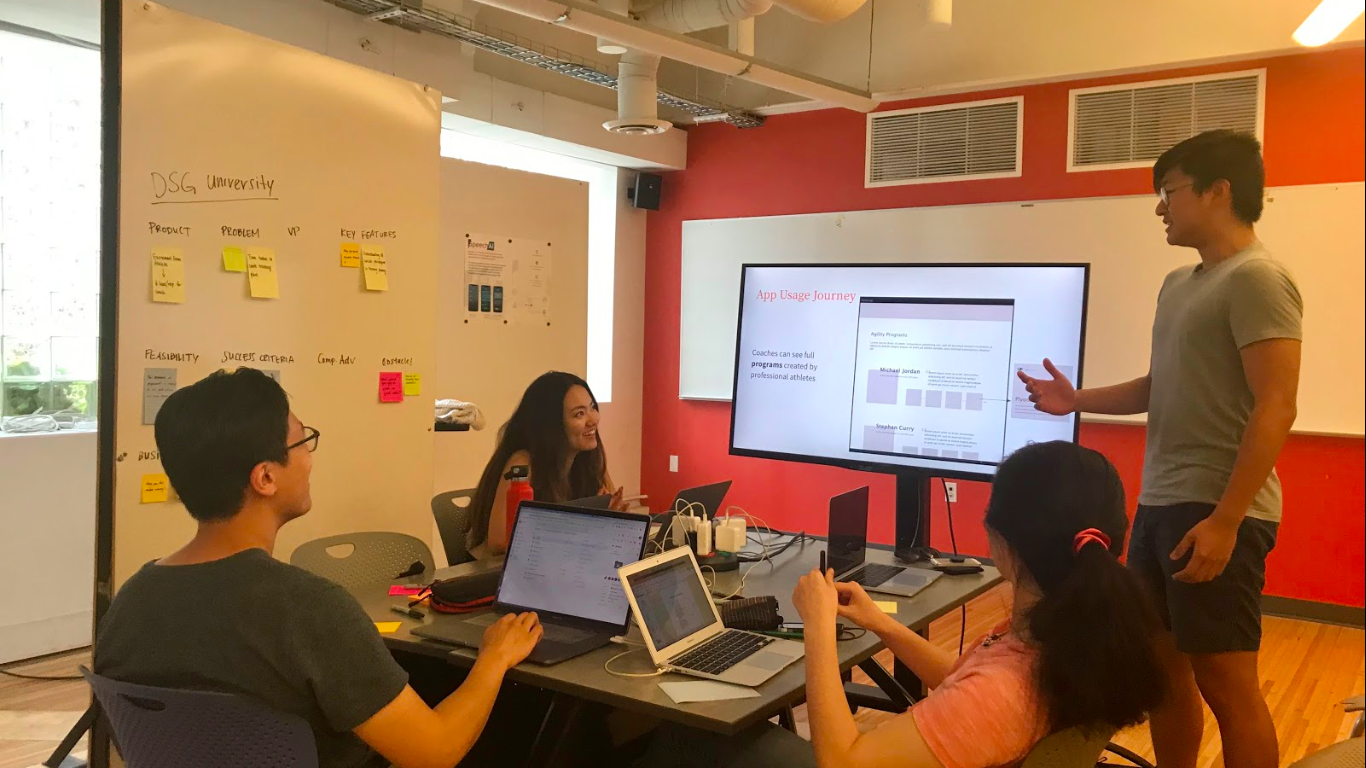
We invented "pitch battle": pitching our favorite idea to each other, and vote with justifications. The idea is judged based on its desirability, feasibility, and viability.
We reached the consensus that DSGU, the training management tool and library of drills created by sports celebrities and users, won the battle.
DSGU fulfills new youth sport coaches’ needs. New youth sport coaches cannot find high quality drills because they don’t know where to look for them. DSGU is a one-stop platform that provides new youth sport coaches drills and practices created by top youth sport coaches and celebrity athletes.
DSGU adds business value to DSG. DSGU creates an additional revenue stream for DSG's via the subscription fees that customers pay for.
DSGU leveraged DSG’s existing capabilities and resources. DSG is connected to both top youth sport coaches and top celebrity athletes through its existing partnerships. In addition, DSG has developed content creation and curation capabilities from its experiences running DSG Protips. These existing DSG resources and capabilities can ensure DSGU's feasibility and growth.
Prototyping Loops
After that, we simply jumped into the standard "prototype-testing" loop.
We went to DSG headquarter again to run a codesign session with their designers.
We also developed our use cases for a persona -- Teressa, a new middle school soccer coach who coaches under 9-year-old girls soccer. She has had little experience to coach soccer, so she has always strugged with making her practice engaging and exciting.
The Product
DSGU is based on subscription model. Membership gives the coaches access to many different drills and plans that are produced by sports celebrities.
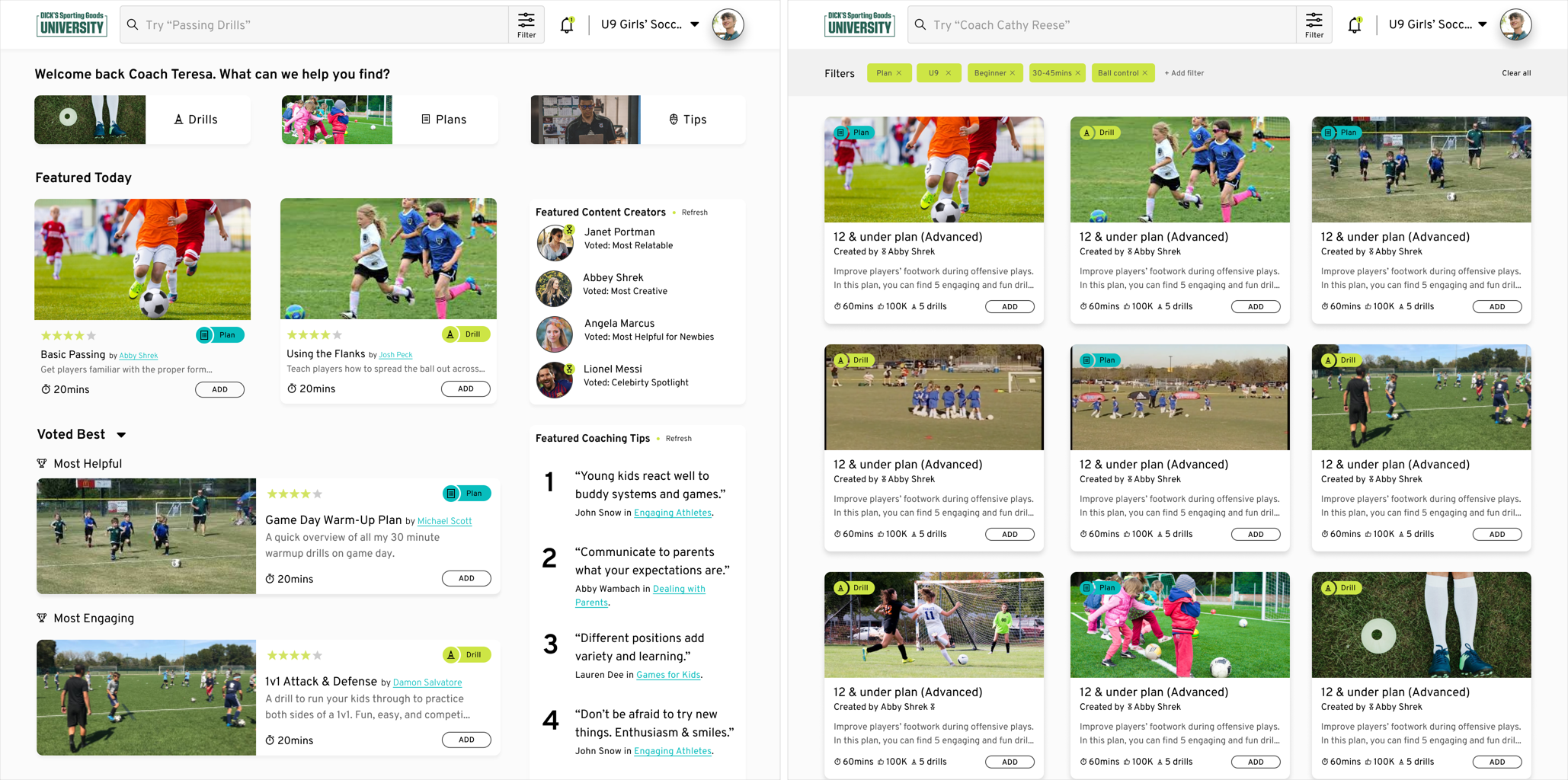
Coaches can search and browse for drills / plans.
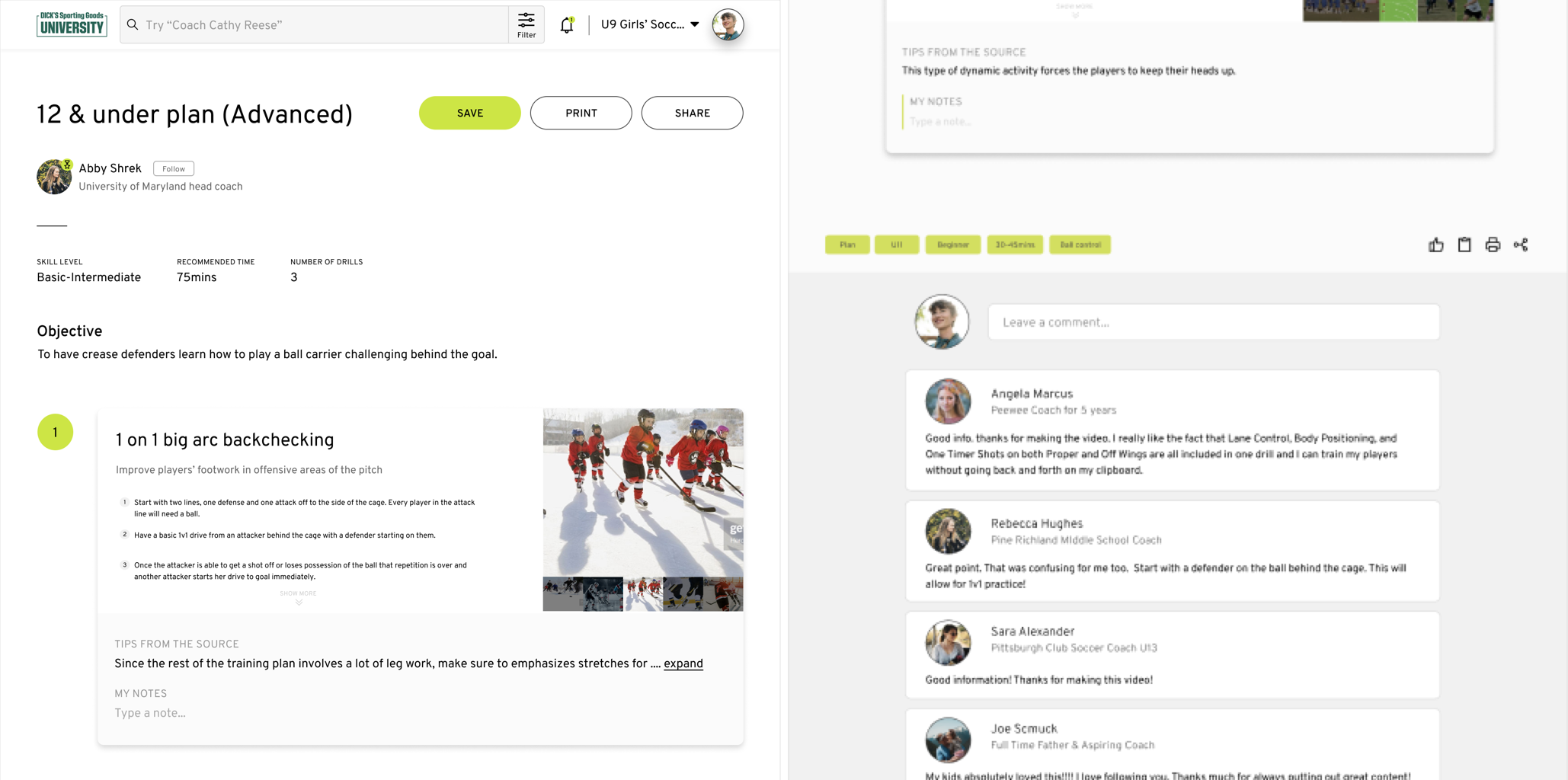
Coaches can check for plan / drill details, and interact with other users.

On the field, coaches can take their phone with them and use the DSGU app to check their saved plans and make fine tweaks on the fly.
User Feedback
“This feels like an easier version of what I’ve been doing with my head coach’s handouts.” -- Youth co-ed soccer coach
“The adding a drill to my clipboard feature feels like I’m adding to a cart, which is really nice.” -- Youth girls’ lacrosse coach
“The annotating tool is neat. This can remind me of things I forget and I know I need to pay attention to.” -- Middle school soccer coach
Credits
This project was done in collaboration with Cathy Dong, Steven Ji, Allison Mui and Sean Park. Denise Hardman was our client representative. Vincent Aleven (primary) and Karen Bernstein were our faculty advisor from HCII.
Special thanks to our 60+ interviewees.
Check out more
Evaluating 2D Drawings
How well can you draw as a 2D artist?
